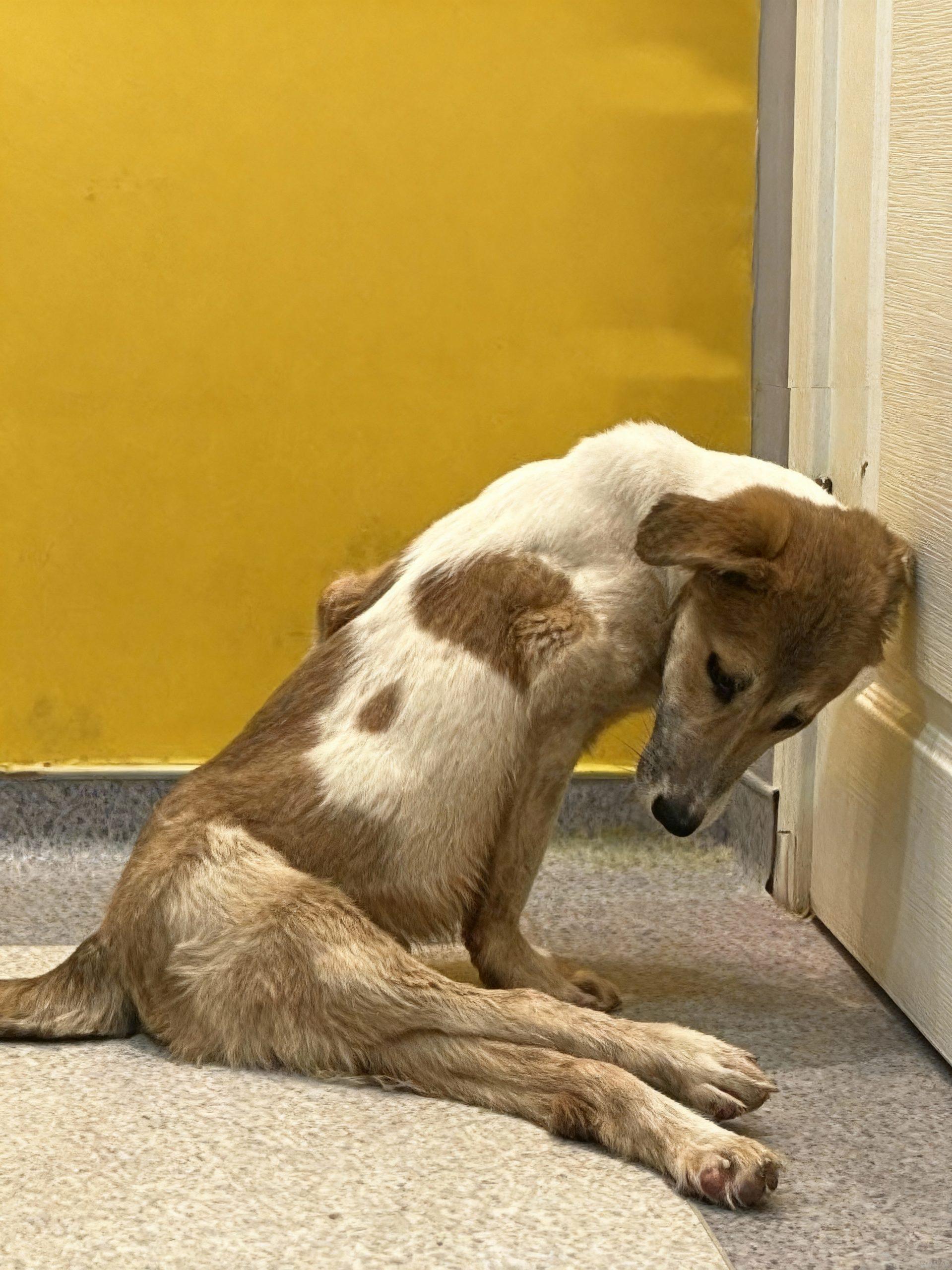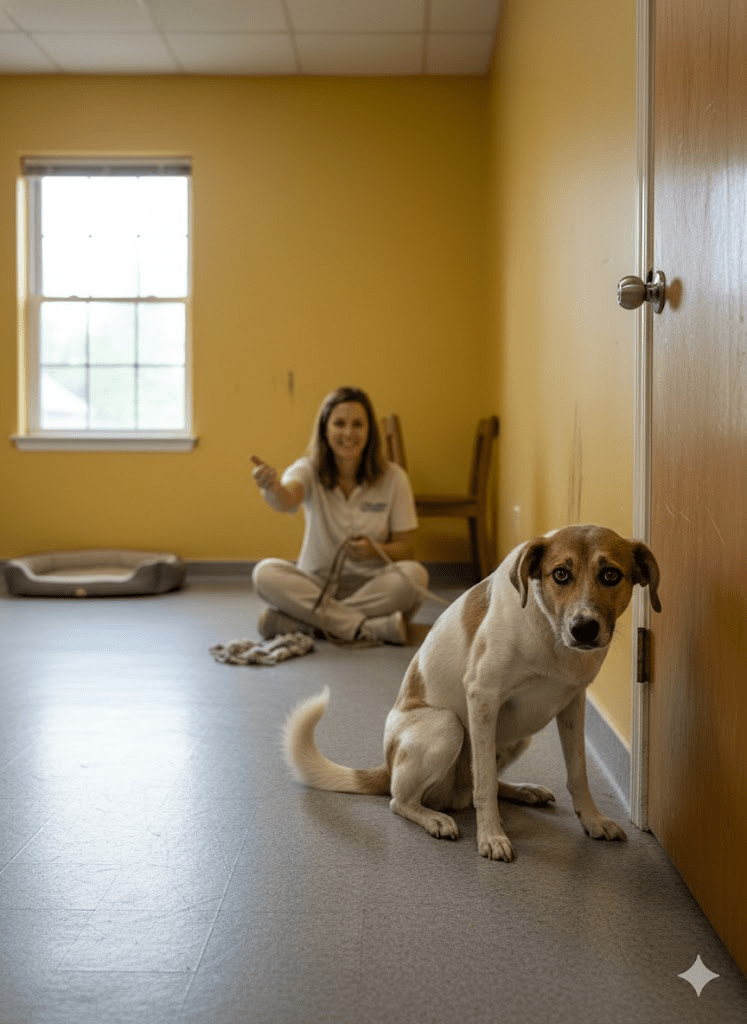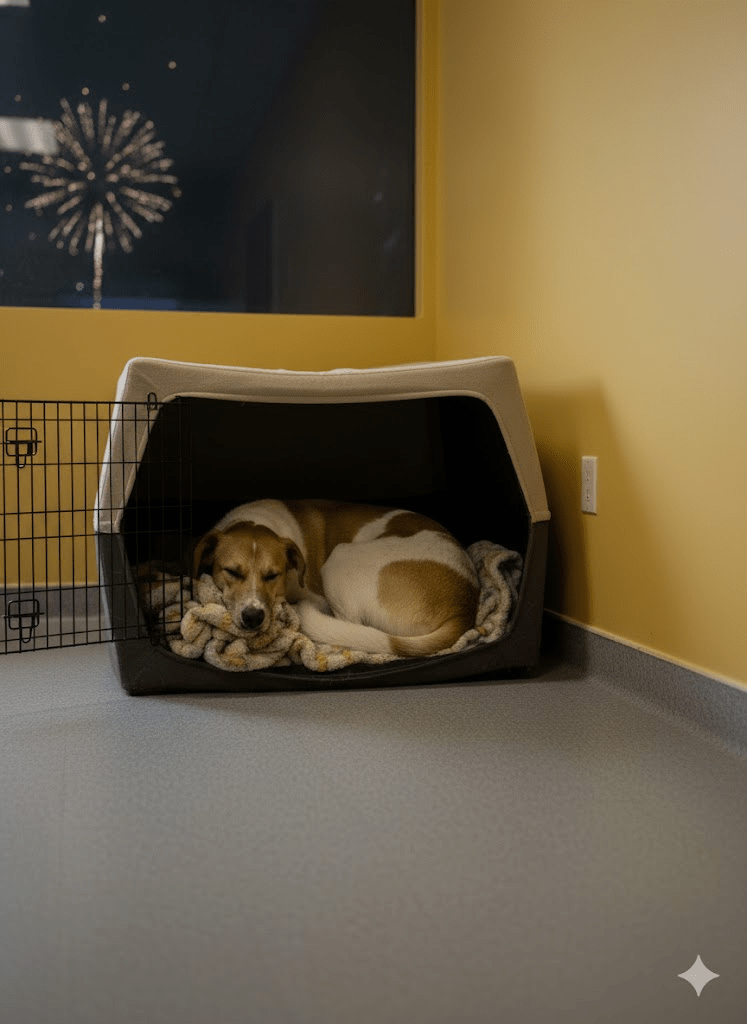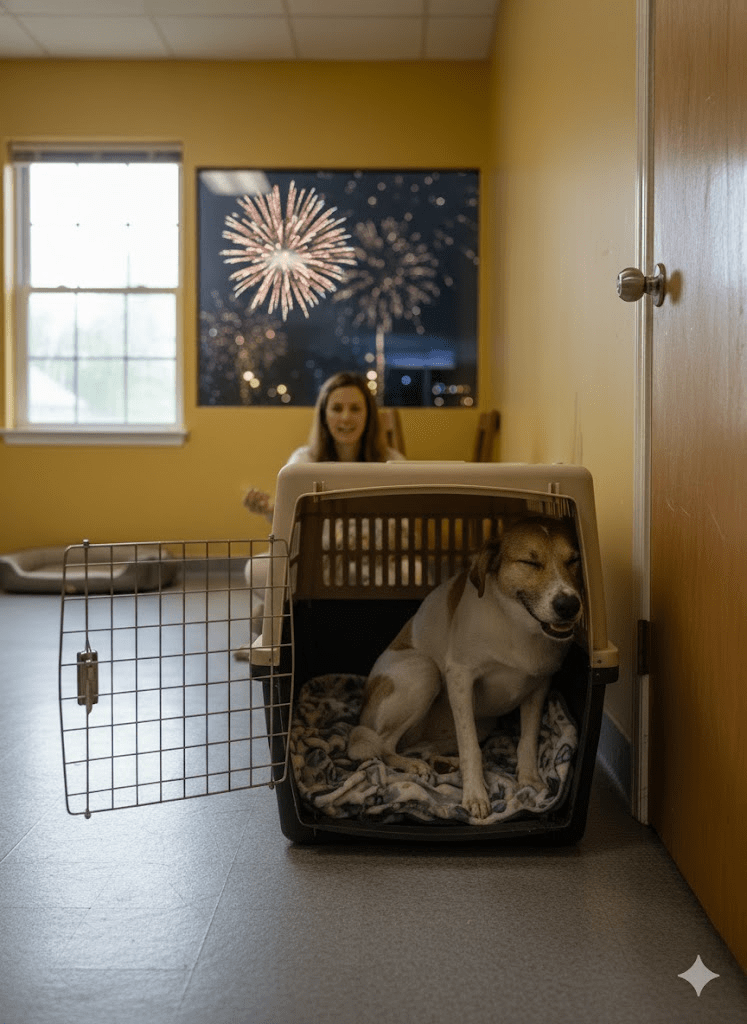The image of a dog hunched against a wall, head down, and body language conveying clear distress, is a poignant reminder of a common but often misunderstood issue in our canine companions: anxiety. Just like humans, dogs can experience a wide range of anxieties, from generalized nervousness to specific phobias. These feelings can manifest in various behaviors, some subtle and some quite dramatic, impacting their quality of life and the bond they share with their human families. Recognizing the signs of anxiety is the first crucial step toward helping our furry friends. It’s not always about obvious trembling or cowering; sometimes, it’s a dog that constantly seeks reassurance, paces restlessly, or displays destructive behaviors when left alone. Understanding the root causes, whether it’s separation anxiety, noise phobias, past trauma, or even a lack of proper socialization, is essential for developing an effective intervention strategy. This article will delve into the complexities of canine anxiety, offering insights into its causes, symptoms, and, most importantly, actionable steps pet owners can take to provide comfort and support to their anxious dogs, fostering a happier, more secure environment for them to thrive.

Anxiety in dogs isn’t a singular condition but a spectrum of emotional responses. One of the most prevalent forms is separation anxiety, affecting a significant number of dogs. This occurs when a dog forms an overly strong attachment to one or more family members and becomes distressed when left alone. The symptoms can range from excessive barking and howling to destructive chewing of furniture, urination, or defecation inside the house. It’s often misunderstood as “bad behavior,” when in reality, the dog is experiencing genuine panic and fear. Other common anxieties include noise phobias, particularly to thunderstorms, fireworks, or loud traffic. Dogs with noise phobias may hide, tremble, pace, or even try to escape. Social anxiety, which can stem from insufficient early socialization, might make a dog fearful or aggressive towards unfamiliar people or other dogs. Past traumatic experiences, such as abuse, neglect, or even a sudden change in environment, can also leave lasting emotional scars that manifest as anxiety. Understanding which type of anxiety your dog is experiencing is crucial for tailoring the most effective intervention.

Identifying the specific triggers for your dog’s anxiety is a critical step in managing the condition. This often involves careful observation and sometimes even keeping a journal of when and how your dog displays anxious behaviors. Is it only when you leave the house? Does it happen during thunderstorms? Does your dog become distressed when new people visit? Once triggers are identified, strategies can be implemented to either avoid them or, more effectively, to gradually desensitize your dog to them. For separation anxiety, this might involve practicing short departures and returns, gradually increasing the time you are away. For noise phobias, playing recordings of the offending sounds at a low volume and slowly increasing it over time, while rewarding calm behavior, can be helpful. It’s also important to create a safe space for your dog, such as a crate or a specific room, where they can retreat and feel secure when feeling overwhelmed. This space should be associated with positive experiences, never used for punishment.

Behavior modification techniques are at the heart of treating canine anxiety. Positive reinforcement is key, rewarding calm and brave behaviors, even small ones. Counter-conditioning involves changing your dog’s emotional response to a trigger from negative to positive. For example, if your dog is anxious about strangers, you could have a friend toss treats to your dog from a distance, gradually decreasing the distance as your dog associates strangers with positive outcomes. Consistency is paramount; everyone in the household needs to be on the same page with training and management strategies. It’s also important to avoid inadvertently reinforcing anxious behaviors. For instance, excessively comforting a dog during a thunderstorm might, unintentionally, confirm to them that there is indeed something to be afraid of. Instead, try to remain calm and project a sense of normalcy, perhaps engaging them in a game or offering a high-value chew toy to redirect their focus.







